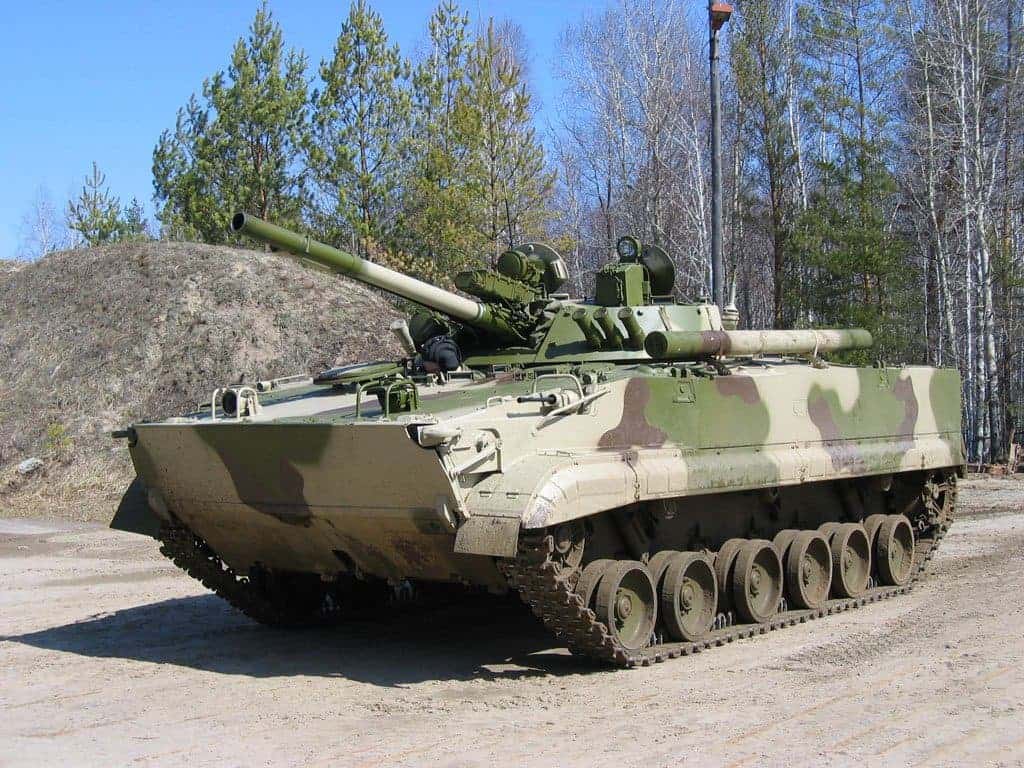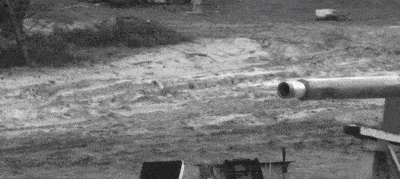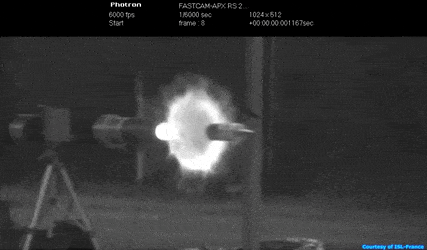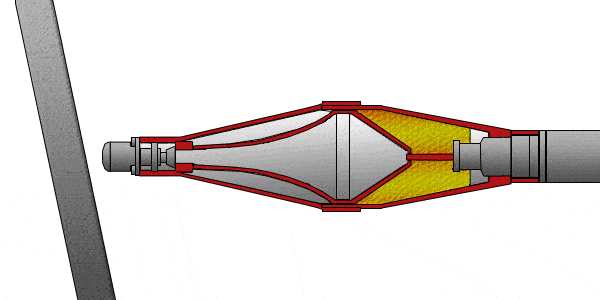
Wars have always been a scientific wrestling match just as much as a brutal confrontation in the field. Soldiers rely on science to give them an edge over their opponents and nowadays, firefights are settled by work done in labs, design bureaus, forges, or universities long before the first shot is fired.
In days long past, technical differences pitted obsidian-wielding Incans against musket-armed conquistadors. Shipbuilders shaped empires. Those who knew how to build chariots trampled over those who did not. Shock cavalry ruled the battlefield of medieval Europe due to the simple stirrup, inherited from Asian invaders. Today, research and technical capability have never been as important in wartime.
Courage and grit keep people fighting, but aren’t much use against a 50-ton tank. Anti-tank missiles, however, are great against them. Big guns, too, tend to do the job. So while we dearly hoped that such weapons will never be necessary, looking at the situation in Ukraine… they still are. So here’s a rundown of the science behind modern anti-tank weapons, from simple cocktails to the more high-tech ones.
First off, the tank

To blow up a tank, you first need a tank.
There is no shortage of photographs or videos in the news today showing some type or another of armored vehicles using the blanket term ‘tanks’. Strictly speaking, this isn’t accurate. Tanks are specialized vehicles meant to perform certain tasks. A tank is defined by what it does and how it’s supposed to do it, not by its components or appearance. Broadly speaking, a tank has tracks, a big, long gun, a really big turret, machine guns poking out of it or on the turret.
Tanks are tracked, heavily armored vehicles, typically carrying heavy primary armament in an enclosed fully-rotatable turret, with secondary armament co-axial to the main weapon. Their role is to engage well-protected targets, other vehicles (especially other tanks), and exploit weaknesses in enemy lines using their mobility.
They do not perform any other role — they do not carry infantry or supplies, they do not provide indirect fire support, they do not work as combat taxis. Generally speaking, they do not carry missile launchers externally. These requirements necessarily inform the shape of tanks, imparting them with their advantages and their drawbacks.

Let’s start with the advantages. Tanks carry the thickest armor and heaviest armament among military vehicles today. They are exceedingly resistant to non-specialized weaponry and pack a mighty punch. Tanks can effectively engage any type of target in battle due to their range of weapon calibers and ammunition types. They are able to traverse virtually any type of terrain, they’re quite scary to anyone and everyone, and typically protect their crews from environmental hazards such as gas weapons.
As far as disadvantages go, tanks are very complex machines with a lot of moving parts. They require extensive and specialized maintenance procedures, crews, and parts. Tanks rely on a vast logistical network for fuel and ammo without which they are completely useless. They generally require extensive maintenance of their drive train after driving a relatively short distance on their own power and need a complete repair/replacement of said drive train after a few of these extensive maintenance procedures. Due to their extreme levels of protection, tanks offer exceedingly poor visibility for their crews, especially at very close distances. Because of this, tanks rely on infantry for defense and are completely helpless against close-in opponents without it. Their tracks are relatively delicate (compared to the rest of the tank) and vulnerable; tanks become immobile if even one of their tracks is broken or jammed. They are also expensive to produce, maintain, and use.
Now that we’ve seen what a tank is, let’s see how we can blow it up.
Kinetic weapons (tank guns)
The main type of kinetic shells used against tanks today is known as Armor-Piercing Fin-Stabilized Discarding Sabot (APFSDS) rounds. It’s a mouthful, but it’s hella effective.
However, because of the recoil they generate when firing and the size and weight of the explosives used to propel them, kinetic rounds are only used with guns, usually mounted on tanks. They are rods made of very hard, dense metals, such as tungsten or depleted uranium alloys. They are fired from a tank’s cannon and rely on speed and toughness to push through steel plates.
These shells are usually much thinner than the bore (diameter) of the gun they’re fired from, so they are mounted in supports called sabots, which are blown away upon firing. The fins keep them steady in flight to maintain accuracy.

Their working principle is quite simple: push a piece of harder metal through a plate of softer metal using high force (speed). The shells bounce around the tank doing a lot of damage after penetration. They also break apart the inside faces of the armor plates they hit (a process known as ‘spalling’), creating high-speed fragments that rip through crew and internal systems. APFSDS rounds do not carry any explosives; all the damage they do is caused by impact between the shell, armor fragments, and the soft insides of the tank.
Tanks today have their armor plates angled to promote APFSDS bouncing on impact. Other types of defense, such as explosive reactive armor (ERA), are also effective against the shells. Their main drawback is that they lose energy in flight and become less effective with distance.


Still, they are the least high-tech weapons useful against tanks and still effective due to their simplicity, reliability, and the immense forces they bring to bear against targets. Ukraine’s tank corps uses this type of ammo on its armed vehicles, as most likely do Russian tanks, as well. Although many varieties are in use, as far as costs go, the US’s M829A3 APFSDS costs around $8,500 per round.
But they’re not what militia or the infantry would use when defending against such vehicles. The shoulder-mounted weaponry you see in videos from Ukraine rely on:
Chemical rounds
Anti-tank rockets and the infamous RPG work on a different principle. Instead of relying on mass and speed to pierce through armor, they use explosive warheads arranged in a certain way — known as ‘shaped charges’. Because they derive their energy from explosives, not mechanical force, they are also known as ‘chemical rounds’ as opposed to ‘kinetic’, speed-based, rounds.

These devices are used in civilian applications as well, but they were originally invented, and still used to, defeat tank armor. In military speak, they are known as high-explosive anti-tank (HEAT) rounds.
Shaped charges work using the Munroe/Neumann effect, which describes how energy from a blast can be focused into a single point. They contain an explosive mass behind a shaped copper cone. When detonated, the cone focuses the explosion into a narrow space. The explosive, in turn, pushes the copper out at extremely high speeds. The shape of the cone is calculated so that the end result is a beam of molten copper shooting out in front of the weapon. Basically, these rounds create a laser beam of molten copper in contact with armor.
Although they are called HEAT, they do not melt armor. The copper jet pushing out of the weapon creates immense pressure which simply digs through armored plates.
Their main drawback is that the jet generated by such weapons is only effective over a small distance. As such, ERA is very effective against shaped charges, as is spaced armor and, to a lesser extent, sloped armor. Even sandbags or metal sheets can be effective in stopping such shells, by forcing them to detonate prematurely. Still, since HEAT rounds don’t need to go fast or be really big to be effective, they are widely used for anti-tank weapons for infantry, land and air vehicles, and drones.
Tanks can also fire HEAT ammo. The cost varies greatly depending on caliber and manufacturer. A US High Explosive Anti-Tank- Multiple Purpose round may cost between $1,500 to $4,000, depending on several factors.
RPGs
The infamous RPG is the simplest type of shaped-charge weapon in use today, the single most widely-produced anti-tank weapon on the planet, and has served in virtually all conflicts since being designed by the Soviet Union in 1960. The RPG-7 is currently in production and in use with some 40 countries around the world and total production, figures are estimated to be close to 10 million units.

The RPG-7 is a shoulder-mounted, portable, reusable rocket-propelled grenade launcher (basically, a bazooka). It fires an unguided rocket-propelled projectile that can carry anti-tank, high explosive/fragmentation, or thermobaric warheads, in a low arc. They are very simple, very cheap, plentiful, and very rugged weapons — each launcher is a steel tube with iron aiming sights and a grip.
This weapon sees extensive use in Ukraine on both sides. It is easy to use, easy to care for, and useful for a wide range of situations, including tank-busting. Its simplicity, although a major advantage, also means that the weapon is more easily countered. It’s also the most widely-used weapon of its type, so it represents a sort of benchmark. Designers know that every tank will face an RPG eventually, and put a lot of effort to protect these vehicles from it specifically. Still, it is more than capable of downing even a heavily-armored modern tank in the right situation and is more than capable of piercing any metal plates that are not protected against shaped charges.

The simplest RPG-7 warhead can pierce through 500 mm of tank armor and is relatively accurate up to 200m / 660 ft, although it can shoot up to a distance of 500 m / 1,640 ft. With a cost of only between $500-2000 per launcher and $100-500 per rocket, the RPG-7 is definitely the way to go if you’re blowing up tanks on a budget.
NLAWs
The Next Generation Light Anti-tank Weapon was a joint British-Swedish project started in 2002 to modernize Cold War-era infantry anti-tank weapons.
Its main advantage over weapons such as the trusty RPG is that it uses guided munitions. Another advantage it has is that it can be fired from enclosed spaces.

RPGs fire a big grenade with a rocket engine strapped to their back. These are not guided and the blast from the launch generates huge pressure behind the weapon, meaning it could seriously injure troops if fired inside a confined space. NLAWs fire actual missiles that have fire-and-forget guidage systems. This means that the weapon uses a passive tracking system — ‘predicted line of sight targeting’ — which points the missile to the predicted position of the target. The missile is first launched using a ‘low-powered ignition’ system, to make it safe to use indoors.
Unlike the other weapons on this list, the NLAW is not designed to ever touch its target. The rocket flies above an enemy tank and detonates one meter above it, sending a powerful pressure wave down on the vehicle. While that might not sound very damaging for the tank, it’s more than enough to pulp the crew inside. This approach allows the NLAW to target even vehicles that are completely hidden behind the cover.
According to reports in the field, it seems to be working quite well against Russian tanks.
The weapon is not reusable, however. Once the rocket is fired, the launcher is disposed of. It offers a similar level of penetration to the RPG — 500 mm, up to a range of 1000 m / 3,300 ft). This makes its cost of roughly $26,000 / €24,000 quite a hefty proposition. However, considering that tanks generally cost in the millions, it could be a worthy investment.
Javelin
This US-made rocket launcher has become a symbol of Ukrainian defiance and is the driving force that inspired this article. This 20-year-old weapon has been in use by the US military, alongside 20 allied nations. A lot of them have been supplied to Ukraine as military aid following the onset of hostilities, and more are planned to be sent there. Ukraine has received thousands of Stingers from countries all around the world to help it defend from Russian invaders.

Although no different in working principle than other anti-tank missiles, the Javelin is one of the most potent weapons of its kind currently employed in the conflict. What sets it apart from other portable launchers is that the Javelin missile is launched in a high arc, and programmed to slam down into enemy tanks from above.
Tank armor is thickest at the front and sides, where most shots are likely to impact. However, to keep the vehicles down to an acceptable weight, concessions have to be made somewhere — so designers put thin armor on their back, with extremely thin protection afforded to the undersides and the top of tanks. The Javelin’s trajectory is meant to take advantage of this design feature.
The missile is also guided, so it can track moving vehicles and ensure high hit probability. Like the NLAW, it is a fire-and-forget system: the soldier using it fires the weapon and can then scramble for cover to avoid return fire. Javelins also have an impressive effective range of up to 4 km / 2.5 miles, which helps a lot.
All of this, however, comes at a cost. A single Javelin system comes in at an eye-watering $80,000 / €71,000. This is very expensive for an infantry weapon, meaning they would be prohibitively expensive to field on-masse. In the arithmetic of war, one such missile is vastly cheaper than the tank it takes out. But this remains the most expensive anti-tank weapon a single soldier can carry into battle in the conflict, severely limiting its use.
The Molotov cocktail
A Molotov cocktail is essentially a bottle filled with fuel and an adhesive — it’s burning liquid that sticks to things.
While not technically an anti-tank weapon, Molotovs can be used against tanks and the Ukrainian Defense Ministry has told civilians to make Molotov cocktails to fight Russian tanks. The defense ministry even distributed a recipe for producing Molotov cocktails to civilians.
Molotovs were extremely efficient against tanks used in World War II but may have a harder time against more modern tanks, which are sealed better and more resilient. However, even if the Molotovs would leave the tank relatively unscathed, they could still be devastating to the driver on the inside of the tank.
We don’t often talk about weapons here on ZME Science, and it’s most definitely not a subject that brings us joy. In an ideal world, these weapons would only belong in the museum. However, we feel that given the ongoing situation, this is worth talking about.
These weapons are definitely not the only ones being used in the fields and cities of Ukraine. But they are among the most impactful. Although it’s tragic to see science embroiled in armed conflict and used to cause death and destruction, there is value in learning about the particular set of circumstances that conflict creates and the solutions we can develop to address them — even as we fight the realities of war and try to prevent such conflicts from happening.
For now, military technology and the science behind it are, unfortunately, a current subject. Hopefully, not for long.


